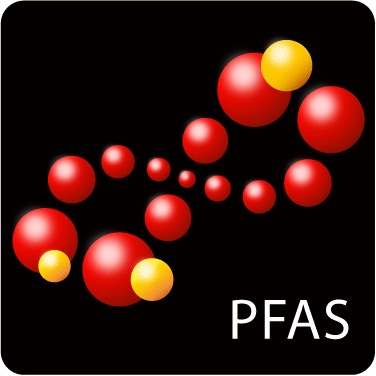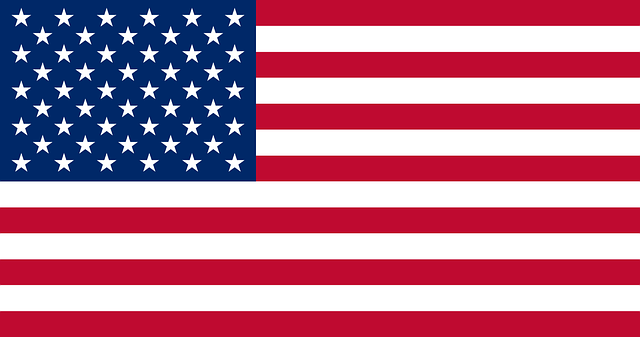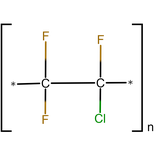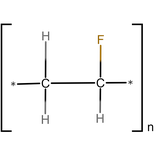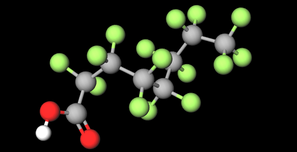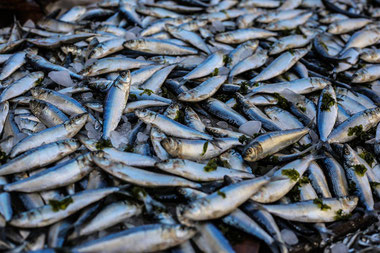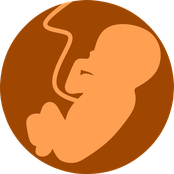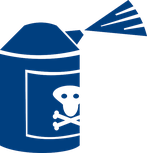Alabama | Limitation for fish consumption from 1 reservoir and 2 creeks | Advisory | PFOS and fish consumption |
Alaska | Limitation for fish consumption in Kimberly Lake | Advisory | Fish consumption |
California | AB 1423
AB 652
AB 1200
AB 1201
AB 2762 AB 2771, AB 496
SB 1266 AB 1817
AB 246
California Proposition 65
SB 343
Regulation, DTSC (Department of Toxic Substances Control) Related Information
AB 347 | January 1, 2026
July 1, 2023
January 1st, 2024
January 1st, 2024
January 1, 2025
January 1, 2025
January 1, 2025
December 24, 2021, for PFOS February 25, 2022, for PFOA
January 1, 2024
April 1, 2022
January 1, 2025 | Artificial turf
Children’s products
Cookware and food packaging
Compostable packaging
Cosmetics
Childern's feeding, uscking, and teething products Other children products Food packaging Textile
Menstrual products
Products sold to California
Packaging with PFAS is considered are non-recyclable
Rugs and carpets treatments – converted textiles or leather
Textiles and apparel |
Colorado | SB 81
HB22-1345
SB 81 | July 1st, 2024
January 1st, 2025
January 1st, 2024 – January 1, 2027
January 1st, 2032 | Artificial turfs
Cleaning products Dental floss Furnishings and upholstered furniture Outdoor clothing suitable for extreme weather conditions (with possible label until 2028) Menstruation products Ski wax Textile articles
Carpets Children’s products Cookware with possible labelling requirements Cosmetics Fabric treatments - Indoor textile Food packaging (fibers) Oil and gas products Rugs
Any products |
Connecticut | Public Act No. 21-191 Connecticut Department of Public Health has issued limitations for fish consumption in numerous locations. | June 15, 2023 October 1, 2021 | Fish consumption Food packaging
|
Georgia | HB 257 HB 390 | Proposed | Feminine products Cosmetics |
Hawaii | HB1644
HB 1896 SB 2427 | July 1, 2024 December 31st, 2024
December 31, 2026 | Class B firefighting foams Food packaging (fibers)
Cosmetics Food service ware (single use) Personal care products |
Illinois | SB 0088 HB 1282 SB 0066
SB 2705
HB 4627 and SB 2705 | Proposed
January 1, 2025
As of July 1st, 2026, and on July 1st annually thereafter until January 1st, 2032 | Apparel Oil and gas products Recycling
Carpets or rugs Cleaning products Compostable products Cookware Cosmetics Dental floss Fabric treatments Food packaging Juvenile products Upholstered furniture and textile furnishings - indoor and outdoor Ski wax
All products and components (PFAS notifications) |
Indiana | Limitation for fish consumption from rivers, streams, and lakes for PFOS substances. | Advisory | Fish consumption |
Iowa | HF 62 | Proposed | Food packaging |
Kentucky | HB 116 | From January 1, 2025, and on every subsequent January 1 thereafter. | Any product (PFAS notification)
|
Maine | LD 217 and LD 1503 (LD 1537 and 38 M.S.R.A. 16 §1614)
38 M.S.R.A. §1693-A(1), 06-096 Chapter 890 LD 1911
32 M.S.R.A. §26A.1731-1738 LD 264, LD 2019 | Proposed
January 1, 2023 July 28, 2020
January 1, 2023 Advisory January 1, 2022 January 1, 2030 | Written notification, then ban in 2030 in all consumer products Carpets, rugs, and fabric Children’s products
Composting and fertilizer Fish consumption Food packaging Pesticides |
Maryland | HB 275 and SB 273
HB 643 Limitation for fish consumption in Piscataway Creek SB 0158 HB 31 | January 1st, 2024
January 1st, 2025 Advisory
June 1, 2023 Proposed | Carpets and rugs Food packaging (fibers) Cosmetics Fish Consumption
Pesticides Recycling |
Massachussetts | S 524
H 2197
S 175
H 779
Limitation for fish consumption in 13 state parks
S 39
S 1431, H 3676, and H 767
S 445
S 2564 | Proposed
February 2023
Proposed
Proposed
Proposed
| Artificial turf
Declaration, then prohibition of PFAS in: - Carpets and rugs
- Cookware
- Fabric treatments
- Packaging and recycling
- Passenger restraints
- Personal care products
- Upholstered furniture
Fish consumption
Fertilizer
Food packaging
Mosquito management
Children's product, which encompass: - Products intended for children aged 12 or younger
- Synthetic turf fields located on school and publicly owned premises, or designated for use by individuals under the age of 18
|
Michigan | MDHHS 'do not eat' restriction in losco County
Limitation for fish consumption in various places PFOS control in Great Lakes
SB 327 | Advisory
Proposed | Aquatic lfe and deer consumption
Fish consumption PFOS restrictions
Food packaging |
Minnesota | HF 2310
SF 669
SF 73
HF 552
Limitation for fish consumption in various places
M.S.A. § 325F.075
HF 1150
HF 2571 | January 1st, 2025
January 1, 2026
January 1, 2026
January 1st, 2032
January 1, 2022
January 1, 2025
Advisory
January 1st, 2024
Proposed
Proposed | Carpets or rugs; Cleaning products; Cookware; Cosmetics; Dental floss; Fabric treatments; Juvenile products, including electrical and electronics; Menstrual products; Textile furnishings; Ski wax; or Upholstered furniture.
Notification: Obligation to notify the Minnesota Pollution Control Agency of products containing PFAS Prohibition in any product that intentionnally contains PFAS, unless unavoidable and exempted.
Cannabis packaging
Children’s products
Fish consumption
Food packaging
Pesticide
Recycling |
Nevada | SB 76 | Proposed | Carpets and rugs Children’s products Cookware – certain labelling requirements Cosmetics Fabric treatments Food packaging Textile furnishings and upholstered furniture - indoor |
New Hampshire | HB 465
Limitation for fish consumption in 5 lakes HB 1352
HB 1649-FN | Proposed
Advisory
January 1, 2025
July 1st , 2026
July 1st, 2028 | Stain-resistant treatments
Fish consumption
Fire station attire, limited to uniform shirts or pants.
Any products (PFAS notifications and labels)
Carpets and rugs Cosmetics Dental floss Fabric treatments Feminine hygiene products Fluorine-treated containers Food packaging and containers Juvenile products PPE (Personal protective equipment) Upholstered furniture |
New Jersey | S 3177
Limitation for fish consumption
A 1554 | Proposed
Advisory
Proposed | Carpets and fabric treatments Cookware Cosmetics Food packaging Labelling requirements
Fish consumption
Recycling |
New York | S 992A
S 1322
A 03571, A 9272, S 834, and S 5648A
S 501B
S 4171 and S 4265
A 05990
N.Y. E.C.L. § 37-0209
S 4246A
A 00773
A09005 | Proposed
January 1, 2025
Proposed
Proposed
December 31st, 2022
Proposed
Proposed
January 1st, 2026
January 1st, 2027
January 1st, 2032 | Anti-fogging sprays and wipes
Apparel
Architectural paints Children’s products Cleaning products Ski wax
Children’s products
Cosmetics and personal care products
Feminine hygiene products
Fish consumption
Food packaging
Packaging and recycling
Pet products
Any products (with PFAS notification) Carpets or rugs Cookware Cosmetics Fabric treatments and textile articles Personal care products
Any products |
North Carolina |
HB 279 | Advisory
Proposed | Fish consumption
Packaging |
Oklahoma | SB 874 | Proposed | Labelling for biosolids |
Oregon | Toxic Free Kids Act: ORS 431A.250 et al.
SB 546
SB 543 | July 27, 2015
Proposed
Advisory | Children’s products
Cosmetics
Fish consumption
Food containers |
Pennsylvania | HB 1122 | Proposed | Food packaging |
Rhode Island | SB 16 and SB 196
HB 5086
HB 7438 and S 2044
HB 7356 and SB 2152 | Proposed
Proposed
January 1st, 2024
January 1st, 2027
January 1st, 2028 December 31st, 2032 | Apparel and uniforms Class B firefighting foams Cleaning products Composting
Food packaging
Artificial Turfs Carpets or rugs Children’s products Cookware Cosmetics Fabric treatments Menstrual products Ski wax Textile articles, furnishings and upholstered furniture
Any products (PFAS notification) Any products |
Tennessee | SB 0573 | July 1, 2028 | Food packaging |
Vermont | H 152 and S 25
18 V.S.A. §1682
18 V.S.A. §1773
18 V.S.A. § 1672(a) and HB 601
H 50
HB 544 | Proposed
July 1, 2023
July 1, 2022
July 1st, 2023
Class B firefighting foam: July 1, 2022 unless used at a terminal: January 1, 2024
July 1st, 2024 July 1st, 2025 (<100 ppm total organic fluorine) July 1st, 2028 (<50 ppm total organic fluorine) July 1st, 2029 (<50 ppm total organic fluorine)
July 10st, 2032 | Cookware Cosmetics Menstrual products Paper products Pesticides
Carpets and rugs Water-resistant treatments
Children’s products
Packaging
Labeling and composting
Firefighting foam
Artificial sports turf field Ski wax Fabrics or textile goods
Outdoor clothing designed for extreme wet weather conditions
Any products |
Virginia | HB 1855 | Proposed | Virginia |
Washington State | WAC 173-337
HB 1047
WAC 173-334-010 et seq.
HB 1694
WA ST 70A.222.070 | January 31, 2020
January 1st, 2025
Advisory
May 2024; implemented two years after Washington’s Department of Ecology submits a finding of safer alternatives to the Colorado legislature | PFAS reporting obligation to : - Carpets and rugs
- Leather and textile furnishings - indoor
- Stain-resistance treatments
Cosmetics
Children’s products
Consumer products in the Chemical Action Plan
Fish consumption
Food packaging |
Wisconsin | | Advisory | Deer and fish consumption |
